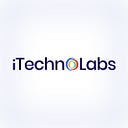What is MACH Architecture? Components, Principles, and Examples
MACH Architecture is designed to assist in the rapid launch of products as well as support customizable and alterable components, as well as long-term scaling. MACH Architecture applies to a variety of products, but it is especially well-liked by the digital economy and transformation.
Companies today are confronted with uncertain and evolving demands, with the understanding that technology, particularly, is constantly changing. Businesses require an internal infrastructure as well as optimized software to provide the greatest value. Additionally, companies need to ensure that their external and internal products are capable of adapting quickly to adapt to changing demands from customers or new technology, as well as the changing business environment.
The idea that “composable technology” is the notion that companies can investigate and implement new technology to change and adapt more quickly. According to Gartner research, 60% of companies want to ensure the composability of their software investment. One way organizations can ensure they have composable technology is by using MACH architecture. It is an architecture that is built for modularity (microservices) and connected through API (API-led) as well as adaptable (cloud-based) and decoupled (headless). This guide will go over the various concepts associated with MACH Architecture and its benefits.
What is MACH Architecture?
MACH architecture is an approach to technology infrastructure that is open, flexible, and future-proof, leveraging individual services/functionality, exposed through API, in the cloud, and decoupled for ultimate agility. MACH architecture was designed to enable businesses to develop with a flexible approach and evolve and grow quickly as the needs of business change.
Components of MACH Architecture
The MACH architecture can be broken down into components — M + A + C + H. It is built on Microservices which is API-first, cloud-native, and headless. The next section is to examine the MACH components individually.
MACH principles explained
Explore all the parts of the MACH architecture — Microservices API-first, Cloud-based and headless.
1. Microservices
Microservices technology is based on connecting different services at the back end, in a front end that is decoupled through an API. In a microservices-based architecture, applications are built in separate components, which run every process of the application as a service and communicate through APIs. Each service is specialized in its feature or capability, which means it’s simple to pick and select the services you want to use to build an overall solution that is significantly more customized. These are the benefits of microservices:
- Components are loosely linked through an API and have fewer interdependencies, which makes it simpler to replace or update-modules.
- Other modules may reuse Microservices.
- The module codes make it easy for developers to master every module, spot problems, or make modifications that do not impact the entire (or work in parallel)
- The speed of development is enhanced by the capability to reuse code, select strong frameworks and technologies and allow iterative development.
- Scaling is quicker and less expensive because each microservice can grow independently, and it’s easy to find any bottlenecks.
- It’s designed to fail — one component going down does not affect the whole application.
- Each microservice can utilize the best technology stack to run its business.
2. API-first
First, the Application Programming Interface (API) is a means by which computers with two or more applications (services also known as APIs) communicate. In computer terms, this is an exchange of data and functionalities.
In an old software environment, the software was developed and an API was added as an extension or API. In an API-first application, an API is a key element. API is not an afterthought, it is an integral part of the design integrated into the process by which the software is created and the role APIs are playing in making things occur. All of the components are created to communicate and share information.
Essential elements of an API first design are:
- API API is a key product that must be created and maintained
- APIs are not an afterthought, it’s an essential element of a product’s design
- The API-first model allows for more collaboration with the entire product team to ensure that all activities involving the API are fully supported.
- The API-first model is designed to allow the reusability of connections to various systems (ideally suitable for microservices)
3. Cloud-native
Cloud-native architecture creates applications or services designed for cloud-based use whether private, public, or hybrid. Cloud-native infrastructure means that all databases, servers, and software are within the cloud. Cloud-native is not the same as being an on-premise infrastructure that is hosted at the physical location of the company.
The advantages of a cloud-native system are well-known in everything from security and resilience to lower downtime, and better speed, along with the capability to access applications from any location. Cloud-native applications can be scalable quickly upon demand, and they can be isolated using containers to separate them from the structure, which helps to reduce dependency.
4. Headless
In the headless mode, the front-end and back-end are separated and linked through an API. Developers have more options between the front-end and back-end technologies, which allows for greater best-of-breed solutions as well as the possibility of customizing the product for different devices (e.g., iOS, Android, etc.). There are many code bases.
There are numerous benefits to headless architecture.
- Content can be delivered via API to multiple platforms or channels making it suitable for an Omnichannel strategy
- More efficient editing — could make edits available across all platforms and channels and platforms, speeding up updates.
- Developer flexibility — Designers and developers can use any framework or language, instead of being restricted to the limitations of their CMS’s legacy. System updates or changes to the presentation layer are swift and don’t hinder the development of content. Sometimes, this could reduce the development time by weeks to just a few hours.
Read more about What is MACH Architecture
